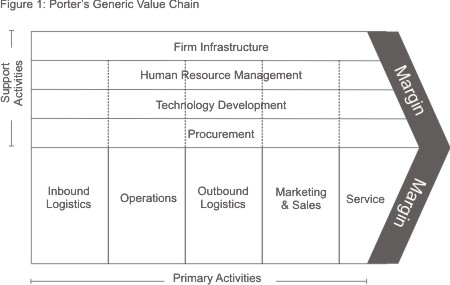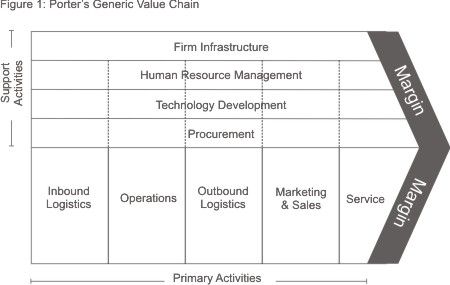The remaining articles in this series will be about sustainability: building a BA practice to last. This article will focus on the need for BAs to become creative leaders driving innovation.
In this complex global economy, your organizational change initiatives need to result in innovative solutions; incremental changes to ‘business as usual’ are no longer enough for organizations to remain competitive. Yet, many CEOs do not believe they have the creative leadership needed to capitalize on complexity to bring about innovation.
So what does innovation have to do with business analysis? For BAs to reach their full potential and add the most value to their organizations, they must become creative leaders of innovative change.
Traditional BA activities are still important, but a new focus on innovation is the 21st century call to action.
Business Analyst as Creative Leader of Innovative Change
Serving as a key project leader with a perpetual focus on adding value to the business, the business analyst becomes a powerful change agent.
The business analyst comes to the forefront of project management to close the gap in areas that have historically been woefully overlooked in mission-critical business transformation projects. Areas that are the purview of the business analyst and that require much more attention for project success include:
- Conducting enterprise analysis with an expert team of diverse background and capturing the details about the most valuable opportunities in a Business Case by:
- Defining business problems and identifying new business opportunities for achieving innovation and remaining competitive
- Understanding the business and the effects of the proposed solution across the enterprise
- Insisting on innovation, fostering creativity, rejecting business as usual, welcoming ambiguity and disruptive change
- Maintaining a fierce focus on the business benefits the initiative is expected to bring to the enterprise in terms of value to your customers and wealth to your bottom line
- Validating that the new solution capitalizes on the opportunity and will contribute the expected business benefits. Managing the benefits expected from the new solution during and after project completion.
- Translating the business objectives into business requirements using powerful modeling visualization tools. Using an integrated set of analysis and modeling tools and techniques to make the as-is and to-be business visible for all to see, understand, and validate. Using disintegrated desktop tools is simply ineffective because BA deliverables cannot be kept current and consistent, and therefore lose their value as reusable organizational assets.
For BAs to become creative leaders of innovative change, they must operate at the enterprise level and delve into strategy execution. BAs need to think of themselves as change agents, visionaries, and credible leaders.
Business Analyst as Change Agent
The prevalence of large-scale organizational change has grown exponentially in the 21st century. All indications are that change is here to stay. John P. Kotter, professor at the Harvard Business School, is regarded as an authority on leadership and change. Kotter’s prediction:
The rate of change is not going to slow down anytime soon. If anything, competition in most industries will probably speed up even more in the next few decades.
Kotter foresees that as the rate of change increases, the willingness and ability of knowledge workers to acquire new knowledge and skills is becoming central to career success for individuals and for the economic success of organizations. BAs that are able to develop the capacity to handle a complex and dynamic business environment are vital to their organizational survival. These BAs will grow to become unusually competent in advancing organizational transformation. They will learn to be creative leaders of innovative change.
Powerful economic and social forces are at work to force innovation and change, including the rise of the Internet, global economic integration, maturation of markets in developed countries, emerging markets in developing countries, and the turbulent political and financial landscape. Competitive pressures are forcing organizations to reassess their fundamental structures, products, and the way they interact with their customers. The amount of change today is formidable. Some react to this change with anger, confusion, and dismay, and it falls upon the business analyst to lead the transformations most organizations must undergo. In her role as change agent, the business analyst brings a fresh new approach to projects in many ways:
- Fosters the concept that projects are business problems, solved by teams of people using technology as a strategic tool
- Works as a strategic implementer of change, focusing on the business benefits expected from the project to execute strategies
- Changes the way the business interacts with the project team, often significantly increasing the amount of business resources/expertise dedicated to projects
- Encourages the technical team members to work collaboratively with the business representatives
- Builds high-performing teams that focus more on the business value of the project than on the “way cool” technology
- Prepares the organization to accept new business solutions and to operate them efficiently
- Measures the actual benefits new business solutions bring to the organization.
Creating and Sustaining the Project Vision
A common vision of project objectives and resulting business benefits is essential for a project team to bring about significant change. A clear vision helps to direct, align, and inspire team members. Without a clear vision, a lofty transformation plan can be reduced to a list of inconsequential projects that sap energy and drain valuable resources. Most importantly, a clear vision guides decision-making so that people do not arrive at every decision through unneeded debate and conflict. Yet we continue to underestimate the power of vision. As a BA, insist on a common vision, as stated in the business case, revisit it often, and use it to drive decision making.
Building your Credibility
When acting as a change agent, the business analyst needs to develop and sustain a high level of credibility. Credibility is composed of both trustworthiness and expertise. A credible leader is one that is trusted, one that is capable of being believed. Above all, a business analyst must strive to be a reliable source of information. In addition to these elements, colleagues often judge others’ credibility on subjective factors, such as enthusiasm and even physical appearance, as well as the objective believability of the message. At the end of the day, professional presence, ethics, and integrity are the cornerstone of credibility.
Credible business professionals are sought out by all organizations. People want to be associated with them. They are thought of as being reliable, sincere—and creative. The business analyst can develop her credibility by becoming proficient in these critical skills and competencies, all of which should be part of your professional development plan:
- Practicing business outcome thinking
- Conceptualizing and thinking creatively
- Demonstrating interpersonal skills
- Valuing ethics and integrity
- Using robust communication techniques to effectively keep all stakeholders informed
- Empowering team members and building high-performing teams
- Setting direction and providing vision
- Listening effectively and encouraging new ideas
- Seeking responsibility and accepting accountability
- Focusing and motivating a group to achieve what is important
- Capitalizing on and rewarding the contributions of various team members
- Managing complexity to reduce project risks and to foster creativity
- Welcoming changes that enhance the value of the solution or product.
Understanding the Real Business Need: Innovation
Business analysts are now being challenged to rethink their approach—to not just record what the business is doing or wants to do, but to operate as a lightning rod to stimulate creativity and innovation. To do so, business analysts are rethinking the role of the customers and users they facilitate, looking at them as creative resources that can contribute imagination and inventiveness, not just operational knowledge. The business analyst who works across and up and down the organization, getting the right people at the right time and in the right place, can fan the flames of creativity.
Transitioning to Creative Leadership – What does it Look Like?
Creative leaders have many distinguishing beliefs and observable behavioral characteristics. According to John McCann, educator, facilitator, and consultant, creative leaders:
- • Believe in the capability of others, offer them challenging opportunities, and delegate responsibility to them
- • Know that people feel a commitment to a decision if they believe they have participated in making it
- • Understand that people strive to meet other people’s expectations
- • Value individuality
- • Exemplify creativity in their own behavior and help build an environment that encourages and rewards creativity in others
- • Are skillful in managing change
- • Emphasize internal motivators over external motivators
- • Encourage people to be self-directing.
Constructive Dialogue
A skilled and credible facilitator can set the stage for groups to engage in productive dialogue that incorporates creativity, ambiguity, tension, and decisiveness. The business analyst is perfectly positioned to be that credible leader and facilitator, one who sets conditions that lead to creativity in motion: You will know it when you see it: Participants are willing to have their ideas and beliefs examined and reexamined; participants look upon each other with respect and realize the benefits that come from open, candid, lively discussion.
Expert Facilitation
As a creative leader, the business analyst combines constructive dialogue with expert facilitation as creativity-inducing tools for stimulating the sharing of unique ideas. Not only does the collective “IQ” of the groups the business analyst works with rise, so can the CQ, the creativity quotient. In fact, business analysts who encourage creativity and guide groups at all levels through the innovation process can increase an entire organization’s CQ.
Thinking Outside the Building
The greatest future breakthroughs will come from leaders who encourage thinking outside a whole building full of boxes.
—Rosabeth Moss Kanter, Ernest L. Arbuckle Professor of Business Administration, Harvard Business School
What kind of barriers should business analysts expect to encounter when they try to become the invaluable creative leaders organizations need today? The creative leader must learn to penetrate a formidable set of customs that exist in any organization. In a Harvard Business Review column, Rosabeth Kanter calls these organizational cultural barriers “inside the building thinking.” These may pose the strongest obstruction to creativity and innovation.
What does this mean for the business analyst in her role as facilitator, charged with helping groups engage in productive dialogue? Business analysts must be cognizant of the fact that their first inclination—and the first tendency of their stakeholders—will be to limit their options by focusing on similar companies doing comparable things. So it is up to the business analyst to be aware of and encourage the group to penetrate the inside-the-building boundaries.
To unleash creativity, business analysts must challenge their stakeholders (users, customers, managers, project managers, developers, and executives) to use not only systems thinking, but also complexity thinking and out-of-the-building thinking to look at the entire ecosystem that surrounds their organizations. It is only then that they can set the stage to bring about lasting innovation.
Becoming a Creative Leader
Leadership is the capacity to mobilize people toward valued goals; that is, to produce sustainable change—sustainable because it’s good for you and for the people who matter most to you.
—Stew Friedman, author, innovator, management professor at the Wharton School
Stew Friedman, professor of management at the Wharton School, former head of Ford Motor’s Leadership Development Center, and author of Total Leadership: Be a Better Leader, Have a Richer Life, posed this question to business leaders across the country: “What kind of leadership do we need now?” The most common response was adaptive, flexible, and innovative. Because of the current sense of turbulence in the business world and in our lives, the leadership attribute that comes to mind most often is a means for dealing with chaos, which Friedman calls playful creativity.
Every person can have a capacity for leadership, regardless of organizational level or title. Leadership should not be confined to work but extended to one’s personal life, community involvement, and family life. So how do we become creative leaders? We need to actively work at it by experimenting with how things get done at work, as well as in other parts of our lives. It is not the experiment that counts, but what we learn from it. Did we really create something new? What worked well, and what didn’t?
Putting it all Together
So what does this mean for the Business Analyst?
BAs must continually strive to overcome the three great inhibitors to creativity: fear of failure, guilt about appearing to be self-centered, and ignorance of what’s possible. If BAs are not focusing on removing these barriers through experimenting, imagining, and continually trying new things, then they are “missing opportunities to strengthen their capacity to gain control in an increasingly uncertain world.” Hence, Friedman asks: “So, what small wins are you pursuing these days? How will they improve your ability to be creative and to have greater capacity to adapt to the rapidly shifting realities of your life and work?”
Creative leaders produce sustainable change. Strive to become a creative leader—and strive you must, because creative leadership is gravely needed for your organizational survival.
Leaders rely on their credibility and ethics to succeed; never sacrifice your integrity. Create the most sophisticated professional development plan you have ever had. Focus your plan on communications, creativity, innovation, facilitation, and team leadership. Include all types of learning:
- Formal training and certifications
- Informal mentoring
- Experiences that stretch your capabilities
- Self study
- Reading, reading, reading.
Finally, don’t take yourself too seriously. People want to work with leaders who are credible and present themselves well, but they also want to have fun. Learn how to balance seriousness with playful creativity. Spend a lot of time planning your meetings, the techniques you will use, the outcomes you need. Then take a step back and make sure the experience will be fruitful, rewarding, and yes, fun for all participants.
So what does this mean for the BA Practice Lead?
If you are a BA Practice Lead, insist that your BAs conduct real enterprise analysis to drive innovation before a Business Case is created and used to propose a new initiative. If your BAs are assigned to a project and these activities have not been adequately performed, help them pull together a small expert team and facilitate them through this important due diligence. And continually ask: “Are we really innovating?”
Portions of this article are adapted with permission from The Enterprise Business Analyst: Developing Creative Solutions to Complex Business Problems by Kathleen B. Hass, PMP. © 2011 by Management Concepts, Inc. All rights reserved. The Enterprise Business Analyst: Developing Creative Solutions to Complex Business Problems
Don’t forget to leave your comments below.
References
- John M. McCann, “Leadership as Creativity: Finding the Opportunity Hidden Within Decision Making and Dialogue,” National Endowment for the Arts,(accessed July 2010).
- Ibid.
- Rosabeth Moss Kanter, “Column: Think Outside the Building,” Harvard Business Review, The Magazine (March 2010), (accessed August 2010).
- Stew Friedman, “Become a More Creative Leader—Think Small,” Harvard Business Review Blogs (June 15, 2009), (accessed August 2010).
- Marci Alboher, “Hot Ticket in B-School: Bringing Life Values to Corporate Ethics,” New York Times (May 29, 2008),(accessed August 2010).
- Stew Friedman, “Become a More Creative Leader—Think Small,” Harvard Business Review Blogs (June 15, 2009), (accessed August 2010).



 “Rework is good!”
“Rework is good!”